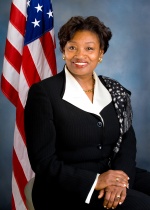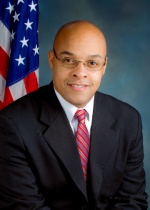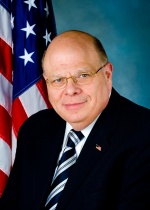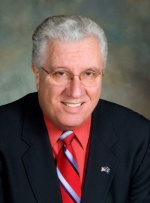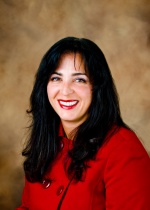New York 2010 legislative election results
Senate
|
Alabama • Alaska • Arizona • Arkansas • California • Colorado • Connecticut • Delaware • Florida • Georgia • Hawaii • Idaho • Illinois • Indiana • Iowa • Kansas • Kentucky • Maine • Maryland • Massachusetts • Michigan• Minnesota • Missouri • Montana • Nebraska • Nevada • New Hampshire • New Mexico • New York • North Carolina • North Dakota • Ohio • Oklahoma • Oregon • Pennsylvania • Rhode Island • South Carolina • South Dakota • Tennessee • Texas • Utah • Vermont • Washington • West Virginia • Wisconsin • Wyoming |
| Other 2010 Election information |
New York State Senate Election Results
This page contains macro-level election results and analysis for the New York State Senate. For results in individual contests see our New York State Senate elections, 2010 page. The following is a breakdown of the state senate before and after the election:
| New York State Senate | |||
|---|---|---|---|
| Party | As of November 1, 2010 | After the 2010 Election | |
| Democratic Party | 32 | 30 | |
| Republican Party | 29 | 32 | |
| Vacancy | 1 | - | |
| Total | 62 | 62 | |
What You'll See on This Page
This page displays the following lists of candidates
- Incumbents who ran on November 2
- Incumbents who were defeated
- Challengers who defeated an incumbent
- Newly elected senators
- List of all winners
- Unopposed candidates
- Third party candidates
State Senate Overview:
- There were 54 incumbents who ran in the November 2 general election. Only 5 incumbents lost, and thus 49 incumbents were re-elected to the New York State Senate.
- One Republican incumbent lost in the general election, while 4 Democratic incumbents lost.
- There will be 13 new senators sworn-in. Of those 14, 6 are Democrats and 7 are Republicans
- Of the 62 seats up for election, 30 were won by Democrats and 32 by Republicans.
- 8 candidates were unopposed, 5 Democrats and 3 Republicans.
- Only 4 candidates ran only as an independent or third party candidate in the general election.
Incumbency Analysis
Of the 1,167 state senate seats up for election in 2010, incumbents ran for 894 (76.6%) of them. Of these 894, 94 lost their re-election bids, 89 Democrats and 5 Republicans. In New York, eight incumbent senators did not run for re-election on the November 2 ballot, while 54 incumbents (87.1%) ran for re-election. Of these 54 incumbents, 5 were defeated. One was a Republican and 4 were Democrats.
Incumbents who ran on November 2
The following is a list of all of the incumbents who ran on the November 2 general election ballot:
- Charles Fuschillo
- Thomas Duane
- Roy McDonald
- Joseph Griffo
- Andrew Lanza
- Andrea Stewart-Cousins
- Antoine Thompson
- Bill Perkins
- Brian Foley (New York)
- Carl Kruger
- Carl Marcellino
- Catharine Young
- Craig Johnson (New York)
- Daniel Squadron
- Darrel Aubertine
- David Valesky
- Diane Savino
- Betty Little
- Eric Adams (New York)
- Frank Padavan
- George Maziarz
- Hugh Farley
- James Alesi
- James L. Seward
- Jeffrey Klein
- John Bonacic
- John DeFrancisco
- John J. Flanagan
- John L. Sampson
- Jose M. Serrano
- Jose Peralta
- Joseph Addabbo
- Joseph Robach
- Kevin Parker (New York)
- Kemp Hannon
- Kenneth LaValle
- Liz Krueger
- Malcolm Smith
- Martin Golden
- Martin Malave Dilan
- Michael Nozzolio
- Michael Ranzenhofer
- Neil Breslin
- Owen H. Johnson
- Ruben Diaz Sr.
- Ruth Hassell-Thompson
- Shirley Huntley
- Stephen Saland
- Suzi Oppenheimer
- Toby Ann Stavisky
- Velmanette Montgomery
- William Larkin
- Edward Meyer
- Thomas Libous
- Dean Skelos
Incumbents defeated
The following is a list of incumbents defeated on November 2:
| Candidate | Party | District |
|---|---|---|
| Antoine Thompson | ||
| Brian Foley (New York) | ||
| Craig Johnson (New York) | ||
| Darrel Aubertine | ||
| Frank Padavan |
Challengers who beat an incumbent
The following is a list of challengers who defeated an incumbent on November 2:
| Candidate | Party | District |
|---|---|---|
| Jack Martins | ||
| Lee Zeldin | ||
| Mark Grisanti | ||
| Patricia Ritchie | ||
| Tony Avella |
New State Senators and General Election Winners
388 new senators were elected across the country. This includes challengers who defeated incumbents as well as candidates who won open seats. Of these 388, 278 were Republicans and 110 were Democrats. In New York, 13 new senators will be sworn-in. Of those 13, 6 are Democrats and 7 are Republicans. In the 7 open seat contests, Republicans won 3 and Democrats 4. In total, New York elected 62 senators, 32 Republicans and 30 Democrats.
Newly elected senators
The following are the newly-elected members of the New York State Senate:
Democratic
Republican
Open Seat Winners
The following is a list of candidates who won election in seats where no incumbent was running:
Democratic
Republican
Candidates who won election
The following is a list of all candidates elected to the New York State Senate:
Democratic
- Thomas Duane
- Adriano Espaillat
- Andrea Stewart-Cousins
- Bill Perkins
- Carl Kruger
- Daniel Squadron
- David Carlucci
- David Valesky
- Diane Savino
- Eric Adams (New York)
- J. Gustavo Rivera
- Jeffrey Klein
- John L. Sampson
- Jose M. Serrano
- Jose Peralta
- Joseph Addabbo
- Kevin Parker (New York)
- Liz Krueger
- Malcolm Smith
- Martin Malave Dilan
- Michael Gianaris
- Neil Breslin
- Ruben Diaz Sr.
- Ruth Hassell-Thompson
- Shirley Huntley
- Suzi Oppenheimer
- Tim Kennedy (New York)
- Toby Ann Stavisky
- Tony Avella
- Velmanette Montgomery
- Edward Meyer
Republican
- Charles Fuschillo
- Roy McDonald
- Joseph Griffo
- Andrew Lanza
- Carl Marcellino
- Catharine Young
- Betty Little
- George Maziarz
- Greg Ball (New York)
- Hugh Farley
- Jack Martins
- James Alesi
- James L. Seward
- John Bonacic
- John DeFrancisco
- John J. Flanagan
- Joseph Robach
- Kemp Hannon
- Kenneth LaValle
- Lee Zeldin
- Mark Grisanti
- Martin Golden
- Michael Nozzolio
- Michael Ranzenhofer
- Owen H. Johnson
- Patricia Ritchie
- Patrick Gallivan
- Stephen Saland
- Thomas O'Mara
- William Larkin
- Thomas Libous
- Dean Skelos
Competitiveness
Across the nation, 1,167 state senate seats were up for election in 2010. 1,143 of those seats were partisan seats (24 seats were up for election in Nebraska's nonpartisan unicameral legislature). In 320 (6.7%) of these state senate contests, there was a major party candidate with no major party opposition. In New York, 8 candidates (12.9% of seats) had no major party challenger, 5 Democrats and 3 Republicans.
Unopposed candidates in general election
The following candidates did not face major party competition:
Democratic
Republican
Ballot Access
Across the nation, 140 independent or third party candidates ran for state senate. In New York, 13 (14.4%) of the 90 senate candidates ran only as an independent or third party candidate.(New York employs fusion voting, so many major party candidates also ran on third party tickets.) None won election in the November 2 general election.
Third party candidates
The following is a list of third party and independent candidates who ran in 2010:
House
|
Alabama • Alaska • Arizona • Arkansas • California • Colorado • Connecticut • Delaware • Florida • Georgia • Hawaii • Idaho • Illinois • Indiana • Iowa • Kansas • Kentucky • Maine • Maryland • Massachusetts • Michigan• Minnesota • Missouri • Montana • Nebraska • Nevada • New Hampshire • New Mexico • New York • North Carolina • North Dakota • Ohio • Oklahoma • Oregon • Pennsylvania • Rhode Island • South Carolina • South Dakota • Tennessee • Texas • Utah • Vermont • Washington • West Virginia • Wisconsin • Wyoming |
| Other 2010 Election information |
New York State House Election Results
This page contains macro-level election results and analysis for the New York State Assembly. For results in individual contests, see our New York State Assembly elections, 2010 page. The following is a breakdown of the state house before and after the election:
| New York State Assembly | |||
|---|---|---|---|
| Party | As of November 1, 2010 | After the 2010 Election | |
| Democratic Party | 105 | 99 | |
| Republican Party | 42 | 50 | |
| Independence Party | 2 | 1 | |
| Vacancy | 1 | - | |
| Total | 150 | 150 | |
What You'll See on This Page
This page displays the following lists of candidates
- Incumbents who ran on November 2
- Incumbents who were defeated
- Challengers who defeated an incumbent
- Newly elected senators
- List of all winners
- Unopposed candidates
- Third party candidates
State House Overview:
- There were 129 incumbents who ran in the November 2 general election. Only 5 incumbents lost, and thus 124 incumbents were re-elected to the New York State Assembly.
- No Republican incumbents lost in the general election, while 1 Independence incumbent and 4 Democratic incumbents lost.
- There will be 26 new representatives sworn-in. Of those 26, 9 are Democrats and 17 are Republicans
- Of the 150 seats up for election, 99 were won by Democrats, 50 by Republicans, and 1 by an Independent.
- 37 candidates were unopposed, 24 Democrats and 13 Republicans.
- Only 33 candidates ran only as an independent or third party candidate in the general election.
Incumbency Analysis
Of the 4,958 state house seats up for election, incumbents ran in the general election for 4,091 (79.5%) of them. Of these 4,091 incumbents, 413 lost their re-election bids, 403 Democrats and 10 Republicans. In New York, 129 (86.7%) incumbents ran for re-election. Of these 129, 5 incumbent representatives were defeated. One was an Independence candidate and 4 were Democrats.
Incumbents who ran on November 2
The following is a list of all of the incumbents who ran on the November 2 general election ballot:
- Sheldon Silver
- Michelle Schimel
- Earlene Hill Hooper
- Harvey Weisenberg
- David Weprin
- Grace Meng
- Rory Lancman
- Audrey Pheffer
- Nettie Mayersohn
- William Scarborough
- Andrew Hevesi
- Margaret Markey
- Michele Titus
- Vivian Cook
- Michael DenDekker
- Catherine Nolan
- Jeffrion Aubry
- Inez Barron
- Rhoda Jacobs
- Karim Camara
- James Brennan (New York)
- Alec Brook-Krasny
- Dov Hikind
- Helene Weinstein
- Felix Ortiz
- Steven Cymbrowitz
- William Colton
- Joan Millman
- William Boyland
- Peter Abbate
- Hakeem Jeffries
- N. Nick Perry
- Alan Maisel
- Joseph Lentol
- Vito Lopez
- Darryl Towns
- Micah Kellner
- Deborah Glick
- Linda Rosenthal
- Annette Robinson
- Matthew Titone
- Herman Farrell
- Michael Cusick
- Daniel O'Donnell (New York)
- Keith Wright
- Jonathan Bing
- Brian Kavanagh
- Peter Rivera
- Jose Rivera
- Vanessa Gibson
- Naomi Rivera
- Michael Benedetto
- Richard Gottfried
- Jeffrey Dinowitz
- Carl Heastie
- Marcos Crespo
- Amy Paulin
- J. Gary Pretlow
- Nelson Castro
- Mike Spano
- George Latimer (New York)
- Sandra Galef
- Ellen Jaffee
- Kenneth Zebrowski
- Nancy Calhoun
- Aileen Gunther
- Ann Rabbitt
- Frank Skartados
- Kevin Cahill
- John McEneny
- Ronald Canestrari
- Robert Reilly
- Timothy Gordon
- William Magee
- RoAnn Destito
- Addie Jenne
- Barbara Lifton
- Donna Lupardo
- William Magnarelli
- Joseph Morelle
- David Gantt
- David Koon (New York)
- Robin Schimminger
- Crystal Peoples-Stokes
- Dennis Gabryszak
- Sam Hoyt
- Mark Schroeder
- Marc Alessi
- Fred Thiele
- Philip Ramos
- Charles Lavine
- Robert Sweeney
- Joseph Giglio
- Daniel Burling
- James Hayes (New York)
- Stephen Hawley
- Jane Corwin
- Peter Lopez (New York)
- Brian Kolb (New York)
- William Barclay
- Gary Finch
- Bill Reilich
- Janet Duprey
- Tony Jordan (New York)
- Teresa Sayward
- Bob Oaks
- Marcus Molinaro
- George Amedore
- Joel Miller (New York)
- Marc Butler
- Clifford Crouch
- James Tedisco
- Lou Tobacco
- Robert Castelli
- Philip Boyle
- Michael Fitzpatrick (New York)
- Andrew Raia
- James Conte
- Joseph Saladino
- Michael Montesano
- Thomas McKevitt
- David McDonough
- Dean Murray
- Michael Miller (New York)
- Carmen Arroyo
- Barbara Clark (New York)
- Al Stirpe
- Steven Englebright
- Janele Hyer-Spencer
Incumbents defeated
The following is a list of incumbents defeated on November 2:
| Candidate | Party | District |
|---|---|---|
| Marc Alessi | ||
| Timothy Gordon | ||
| David Koon (New York) | ||
| Frank Skartados | ||
| Al Stirpe | ||
| Janele Hyer-Spencer |
Challengers who beat an incumbent
The following is a list of challengers who defeated an incumbent on November 2:
| Candidate | Party | District |
|---|---|---|
| Daniel Losquadro | ||
| Nicole Malliotakis | ||
| Steven McLaughlin (New York) | ||
| Donald Miller (New York) | ||
| Mark Johns | ||
| Andrew Goodell | ||
| Brian Curran (New York) | ||
| Thomas Kirwan |
New Representatives and General Election Winners
1,345 new representatives were elected across the country. This includes challengers who defeated incumbents as well as candidates who won open seats. Of these 1,345, 988 were Republicans and 357 were Democrats. In New York, 26 new representatives will be sworn-in. Of those 26, 9 are Democrats and 17 are Republicans. In total, New York elected 150 representatives, 50 Republicans, 99 Democrats, and 1 independent.
Newly elected representatives
The following are the newly-elected members of the New York State Assembly:
Democratic
Republican
Candidates who won election
The following is a list of all candidates elected to the New York State Assembly:
Democratic
- Fred Thiele
- Philip Ramos
- Robert Sweeney
- Charles Lavine
- Michelle Schimel
- Earlene Hill Hooper
- Grace Meng
- Rory Lancman
- Audrey Pheffer
- Edward Braunstein
- Nettie Mayersohn
- William Scarborough
- Michele Titus
- Vivian Cook
- Jeffrion Aubry
- Catherine Nolan
- Francisco Moya
- Harvey Weisenberg
- Helene Weinstein
- Rhoda Jacobs
- Karim Camara
- James Brennan (New York)
- Alec Brook-Krasny
- Dov Hikind
- David Weprin
- Joseph Lentol
- Felix Ortiz
- Vito Lopez
- Darryl Towns
- William Boyland
- Annette Robinson
- Alan Maisel
- Andrew Hevesi
- Matthew Titone
- Margaret Markey
- Michael Cusick
- Sheldon Silver
- Micah Kellner
- Robert Rodriguez (New York)
- Herman Farrell
- Guillermo Linares
- Brian Kavanagh
- Michael DenDekker
- Aravella Simotas
- Keith Wright
- Jonathan Bing
- Inez Barron
- Richard Gottfried
- Steven Cymbrowitz
- Vanessa Gibson
- Eric Stevenson
- Naomi Rivera
- William Colton
- Carl Heastie
- Amy Paulin
- Sandra Galef
- Nelson Castro
- Ellen Jaffee
- Kenneth Zebrowski
- Peter Abbate
- Joan Millman
- Hakeem Jeffries
- Deborah Glick
- Linda Rosenthal
- Daniel O'Donnell (New York)
- Jose Rivera
- Jeffrey Dinowitz
- Michael Benedetto
- Thomas Abinanti
- George Latimer (New York)
- Marcos Crespo
- Mike Spano
- Aileen Gunther
- Kevin Cahill
- John McEneny
- Ronald Canestrari
- Robert Reilly
- William Magee
- RoAnn Destito
- William Magnarelli
- Addie Jenne
- Barbara Lifton
- Donna Lupardo
- Sam Roberts
- David Gantt
- Joseph Morelle
- Harry Bronson
- John Ceretto
- Crystal Peoples-Stokes
- Dennis Gabryszak
- Sam Hoyt
- Mark Schroeder
- Robin Schimminger
- J. Gary Pretlow
- Michael Miller (New York)
- N. Nick Perry
- Carmen Arroyo
- Barbara Clark (New York)
- Steven Englebright
Republican
- Daniel Losquadro
- Dean Murray
- Alfred Graf
- Michael Fitzpatrick (New York)
- Philip Boyle
- Andrew Raia
- James Conte
- Michael Montesano
- Edward Ra
- David McDonough
- Joseph Saladino
- Thomas McKevitt
- Alec Brook-Krasny
- Nicole Malliotakis
- Lou Tobacco
- Nancy Calhoun
- Ann Rabbitt
- Steve Katz
- Joel Miller (New York)
- Marcus Molinaro
- Steven McLaughlin (New York)
- George Amedore
- Clifford Crouch
- James Tedisco
- Tony Jordan (New York)
- Teresa Sayward
- Janet Duprey
- Claudia Tenney
- Marc Butler
- Donald Miller (New York)
- Kenneth Blankenbush
- Peter Lopez (New York)
- Gary Finch
- Bob Oaks
- William Barclay
- Philip Palmesano
- Brian Kolb (New York)
- Sean Hanna
- Mark Johns
- Bill Reilich
- Christopher Friend
- Stephen Hawley
- Kevin Smardz
- Daniel Burling
- Joseph Giglio
- Andrew Goodell
- James Hayes (New York)
- Jane Corwin
- Brian Curran (New York)
- Robert Castelli
- Thomas Kirwan
Competitiveness
Across the nation, 4,958 state house seats were up for election in 2010. In 1,680 (33.9%) of these state house contests, there was a major party candidate with no major party opposition. In New York, 38 candidates (25.3% of seats) had no major party challenger, 25 Democrats and 13 Republicans.
Unopposed candidates in general election
The following candidates did not face major party competition:
Democratic
- Aileen Gunther
- Aravella Simotas
- Carl Heastie
- Crystal Peoples-Stokes
- Daniel O'Donnell (New York)
- David Gantt
- Grace Meng
- Jeffrion Aubry
- Linda Rosenthal
- Mark Schroeder
- Matthew Titone
- Micah Kellner
- Michael Cusick
- Michael DenDekker
- Michele Titus
- N. Nick Perry
- Nettie Mayersohn
- Ronald Canestrari
- Robert Rodriguez (New York)
- Rory Lancman
- Sheldon Silver
- Vivian Cook
- William Scarborough
- Francisco Moya
- Barbara Clark (New York)
Republican
Ballot Access
In New York, 31 (10.6%) of the 291 assembly candidates ran only as an independent or third party candidate.(New York employs fusion voting, so many major party candidates also ran on third party tickets.) One Independence candidate, Fred Thiele, won election in the November 2 general election.
Third party candidates
The following is a list of third party and independent candidates who ran in 2010:
National Partisan Trends
|
Alabama • Alaska • Arizona • Arkansas • California • Colorado • Connecticut • Delaware • Florida • Georgia • Hawaii • Idaho • Illinois • Indiana • Iowa • Kansas • Kentucky • Maine • Maryland • Massachusetts • Michigan• Minnesota • Missouri • Montana • Nebraska • Nevada • New Hampshire • New Mexico • New York • North Carolina • North Dakota • Ohio • Oklahoma • Oregon • Pennsylvania • Rhode Island • South Carolina • South Dakota • Tennessee • Texas • Utah • Vermont • Washington • West Virginia • Wisconsin • Wyoming |
| Other 2010 Election information |
National Partisan Trends
The following tables detail the partisan breakdown of national election results. These results provide context for Republican gains in New York.
Incumbents who were defeated in the general election
Across the nation, only 15 Republican incumbents were defeated while 492 Democratic incumbents were defeated. In total, 507 (10.4%) of the 4,872 incumbents running in the general election were defeated. The following is a breakdown of incumbent defeats in the 2010 general election:
The following is the breakdown of incumbents who lost.
| Incumbents defeated in 2010 legislative elections | |||
|---|---|---|---|
| Party | Senate | House | Total |
| Democratic | 89 | 403 | 492 |
| Republican | 5 | 10 | 15 |
| TOTALS | 94 | 413 | 507 |
Total new legislators elected
In total, 1,733 (28.3%) new legislators were elected in 2010. Of these 1,733, 1,266 (73.1%) are Republicans and 467 (26.9%) are Democrats.
The following is the breakdown of new legislators.
| New Legislators after the 2010 legislative elections | |||
|---|---|---|---|
| Party | Senate | House | Total |
| Democratic | 110 | 357 | 467 |
| Republican | 278 | 988 | 1,266 |
| TOTALS | 388 | 1,345 | 1,733 |
Winners of Open Seats
Open seats contests made up 1,178 (19.2%) of the 6,125 seats on November 2. Of these 1,178 open seats, Republicans won 729 (61.9%) while Democrats won 449 (38.1%). Going into the election, the number of open seats formerly held by each party was quite similar. Estimates prior to the election suggest that approximately 52% of the open seats were previously held by Republicans and 48% were held by Democrats.
The following is the breakdown of open seat winners.
| Open Seat Winners in 2010 legislative elections | |||
|---|---|---|---|
| Party | Senate | House | Total |
| Democratic | 108 | 341 | 449 |
| Republican | 191 | 538 | 729 |
| TOTALS | 299 | 879 | 1,178 |
Impact on legislative majorities
- See also: Partisan balance of state legislatures
Heading into the November 2 elections, the Democratic Party held a commanding lead in state houses in the 88 legislative chambers that held elections in 2010. 52 of the 88 chambers, or nearly 60% of them, had a Democratic majority, while only 33 of them had a Republican majority. (Two chambers had an exactly equal number of Democrats and Republicans and one is officially nonpartisan.) The following is a partisan breakdown of state legislatures prior to the November 2 election:
| Partisan breakdown before the November 2010 Election | ||||
|---|---|---|---|---|
| Legislative chamber | ||||
| State senates | 23 | 18 | 1 | 1 |
| State houses | 29 | 15 | 1 | - |
| Totals: | 52 | 33 | 2 | 1 |
As a result of the election, Republicans picked up 20 legislative chambers while Democrats lost 20. Republicans won 53 total chambers on November 2, while Democrats won only 32. The following is a partisan breakdown of state legislatures after the November 2 election:
| Partisan breakdown after the November 2010 Election | ||||
|---|---|---|---|---|
| Legislative chamber | ||||
| State senates | 16 | 25 | 1 | 1 |
| State houses | 16 | 28 | 1 | 0 |
| Totals: | 32 | 53 | 2 | 1 |
Another way to examine the data is to gauge how many chambers had gains for the Democratic Party versus the Republican Party. Using this variable, the wide-sweeping Republican victory is further amplified. Democrats bolstered their majorities in only 7 of 88 (7.96%) state chambers. These legislatures are as follows:
| State legislative chambers where Democrats gained seats on November 2 | ||
|---|---|---|
| State | Chamber | Number of seats gained by Democrats |
| California | Assembly | + 2 |
| Delaware | House | + 2 |
| Hawaii | Senate | + 1 |
| Maryland | Senate | + 2 |
| Massachusetts | Senate | + 1 |
| Missouri | Senate | + 1 |
| West Virginia | Senate | + 1 |
In 7 chambers, the GOP kept their current number of seats. In one chamber, the California State Assembly, both major parties gained seats by filling 2 vacancies and defeating an incumbent independent. Overall, the Republican Party picked up legislative seats in 75 (85.2%) of the 88 legislative chambers that held elections on November 2.
Impact on State Politics
Along with the GOP capture of the U.S. House of Representatives, state Republicans gained trifectas (control of the governorship, house, and senate) in 12 states. The following is a breakdown of trifectas across the nation, before and after the 2010 election:
| Trifectas before and after the 2010 Election | ||||||
|---|---|---|---|---|---|---|
| Party | Before election | U.S. House seats | After election | U.S. House seats | Gain/loss states | Gain/loss congressional seats |
| 16 | 131 | 11 | 115 | -5 | -16 | |
| 8 | 66 | 20 | 198 | +12 | +132 | |
Before the election, 131 U.S House seats were in states with Democratic trifectas, while 66 districts were in states with Republican trifectas. After the election, Republicans trifectas control redistricting for 198 U.S. House seats while Democrats control only 115. Additionally, California, the strongest Democratic trifecta with 53 U.S. House representatives, passed propositions that take redistricting power away from state government.



